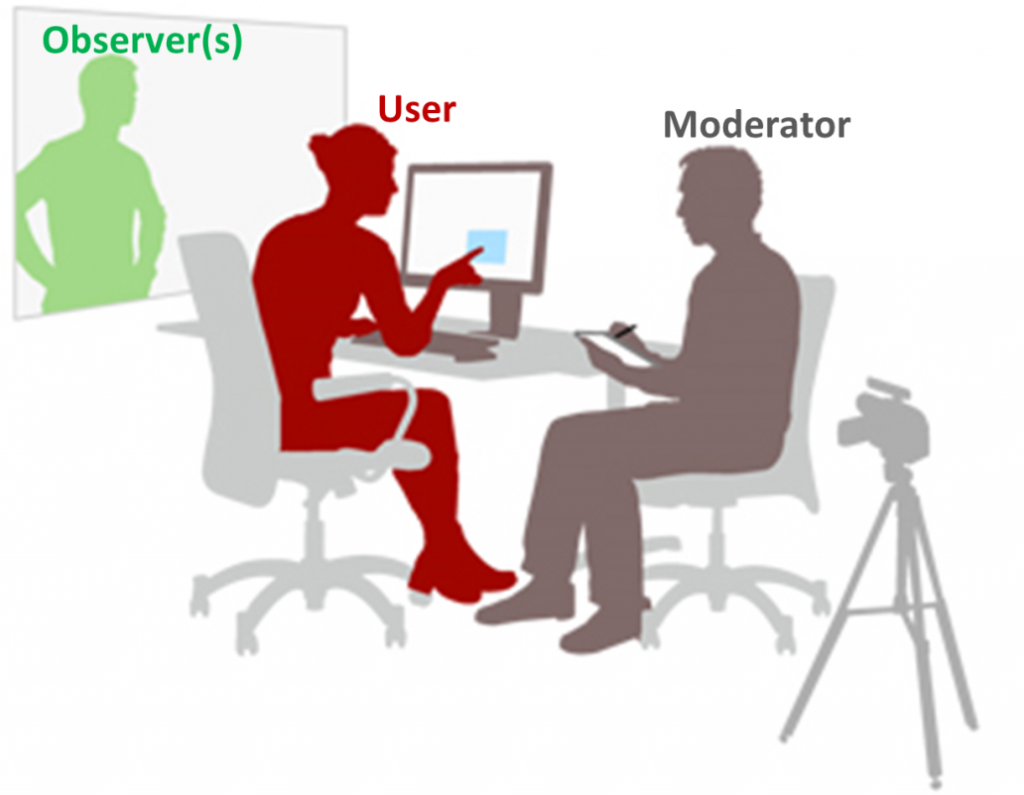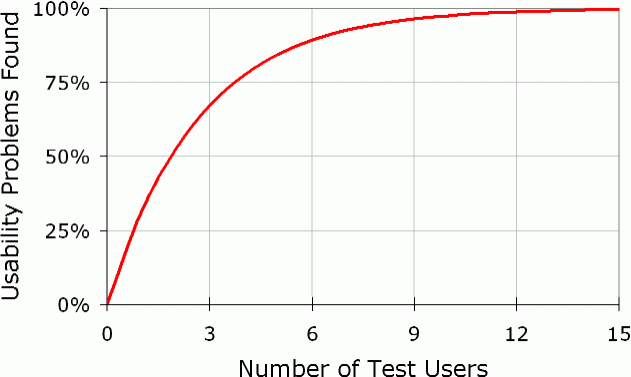You understand your product more than anyone, if you already know what is the (real) problem, you probably know better than anyone else on how to fix it. User Testing (or UX/Usability Testing) helps to uncover the problems of your product.
New to user testing? These Quick Tips for User Testing crafted by our experienced research team will give you a head start!
General Practice
A user testing session generally involves 3 persons:
- User (who is going to use the product)
- Moderator (moderate the test session by observing user, providing tasks, asking questions)
- Observer (observe the user interaction/behaviour and take notes)

Some ways to ensure user is comfortable with the testing session.
- Have only one person to be in the room and sit beside the user.
- Observer(s) can observe the session from another room.
- Moderator may sit on the same position as the user (facing computer).
- Make sure user is comfortable with the setting (sitting posture / devices / temperature / lighting / language preference etc.).
- Inform user that he/she is allowed to stop or rest during the test whenever required.
- Try to provide user a scenario before they start using your product. (e.g. You’re planning to buy a gift for your mum’s birthday, your friend has recommended you to visit this website.
1. Draft Your Test Plan
| Ask user to perform non-leading tasks. |
|---|
| ✓ Try to buy plane tickets for your family vacation |
| X Click on the red button and select the top icon.. |
| Ask only one question or one task each time |
| – Be precise on the question or task that you want user to perform. |
| – Do not ask two or more questions/tasks at once to confuse the user. |
| Optimizing your test plan (tasks/questions) |
| – You can run a pilot test to see whether user can easily understand your task instruction before recruiting users to actual testing session. |
| – Save your resources (time/money) by testing multiple times with different group of users: Fix usability issues and test again with new design. |
| 1 task followed by 1 question |
| – Each time user has completed a task, you can ask follow up question to learn more about their experience or simply get them to provide a rating (easy, medium, difficult or rating 1-10). |
Wait, how many users/testers do you need?
Research by Nielsen Norman shows that 85% of usability issues can be discovered thru testing with 5 users.

Save your resources (time/money) by testing multiple times with different group of users: Fix usability issues and test again with new design.
2. During Testing
| Brief them about your objective. |
|---|
| – Remind them that you’re testing the product, but not testing them (users). It is perfectly fine to make mistakes or fail a task, but /make sure you probe them for reasons. |
| Probe users to think aloud! |
| – Some users are not good in providing verbal feedback or expressing their thought. Ask them question like “what are you thinking?” from time to time. |
| Providing honest feedback |
| – Asians are sometimes reluctant to provide honest feedback, especially harsh or negative comments. Assure them that their honest feedback will help you to achieve your goal (to improve the product). |
| Ask open-ended, follow up questions |
| – Try to ask ‘Why’ more than once when users are answering or providing feedback. It might make you look stupid but it is mandatory for you to uncover real insights. |
| Only interrupt when necessary. |
| – Do not interrupt or correct the user when they’ve done something wrong while using your product. You can question them later. If users ask you questions on how to perform a task, try not to assist them. Instead, ask them why are they confused or what would they do if you’re not around (as the user is using the product alone by himself). |
“If you’re doing this alone at home now, what would you do now?”
“Why?” “What confused you?”
You may, however, show the users the right way of using the product after the test session and continue to get feedback from them.
Extra:
EXCLUSIVE for our readers: Click here to view/download Template Script to brief the user for User Testing session.
You are also highly encouraged to read User Research Quick Tips: User Interview, as it will be useful for you to ask relevant questions during user testing session too.
Note: The user research quick tips was prepared for MaGIC (Malaysia Global Creativity and Innovation Centre) User Research Lab, an initiative that allows startup community to conduct user testing & interview using the a lab that equipped with proper facilities. The lab is currently undergoing renovation, we will update the blog when the lab is ready to be used. Should you’re interested with using the facilities provided by MaGIC, feel free to contact: jowynne[at]mymagic[dot]com[dot]my.

